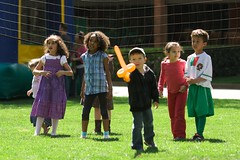 In a recent opinion column in the Star Tribune, John Rash points to the absence of religion as a major theme in shows on the national television networks.
In a recent opinion column in the Star Tribune, John Rash points to the absence of religion as a major theme in shows on the national television networks.
The absence is all the more surprising considering that 80% of Americans reported to Gallup that religion plays a ‘very’ or ‘fairly’ important role in their lives.
And as Rash reminds readers, religion continues to maintain a very visible presence in other popular culture:
Topping the bestseller list is “Heaven is for Real,” about a boy witnessing the afterlife following a near-death experience.
The hottest Broadway show is “The Book of Mormon,” a satire (and grudging admiration) of the faith from the creators of “South Park.”
The highest-grossing R-rated film ever isn’t a gross-out comedy, Quentin Tarantino-style nihilistic violence, or even a sexual coming-of-age story, but “The Passion of the Christ.”
To help understand the absence, Rash turns to academia. Professor Jeanne Halgren Kilde, director of religious studies at the University of Minnesota, explains that even though network television rarely features explicitly religious themes, it is engaging in many of the same debates.
“Questions about good and evil, justice, personal destiny, love, about relationships — these are the narratives we see on TV that are the same questions religion has been asking, and answering, forever. So TV becomes in some senses a kind of superseding of what had been the religious context of discussing, to a more secular context of answering these questions.”
And, while the major religions are rarely a central theme in popular television, there has been a dramatic increase in the number of shows with spiritual and paranormal themes.
Hitting its peak around 2006, this trend inverted media maven Marshall McLuhan’s famous dictum: This time, the message was the mediums — as well as the psychics, ghost hunters and clairvoyant crimefighters who populated prime-time in shows like “Medium,” “Supernatural” and “Ghost Whisperer.”
Penny Edgell, professor of sociology at the University of Minnesota provides context to the rise.
“Network prime time is responding to a trend,” said Penny Edgell “And thus it’s perpetuating and popularizing that trend of people thinking about spiritual things, but drawing on a different kind of repertoire that’s more about relationships and flexible personal contacts that might shape your own life that don’t have anything to do with a doctrine or a church. There’s a lot of the supernatural on TV, but not a lot of organized religion. And that mirrors trends in how people are thinking about their spirituality; it mirrors a rise of a discourse that emphasized spirituality of something that’s distinct from, but not always in opposition to, organized religion.”
Rash does make note of one of the few shows where religion is discussed – America’s longest running cartoon, The Simpsons.
Even the Catholic Church’s official newspaper, Osservatore Ramono, honed in on Homer, saying he “finds in God his last refuge, even though he sometimes gets His name sensationally wrong.”
Whether or not the misadventures of America’s favorite animated family is the appropriate venue for a national discussion of religion remains up for debate.









